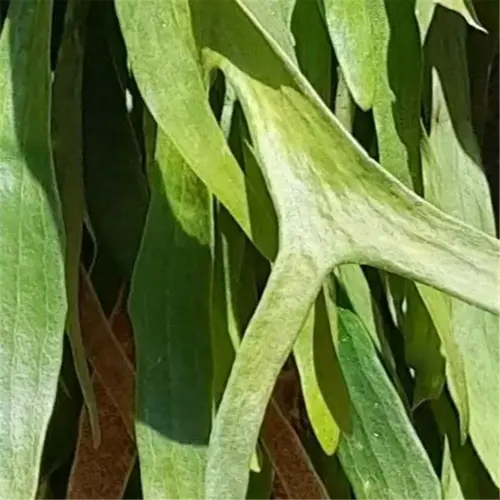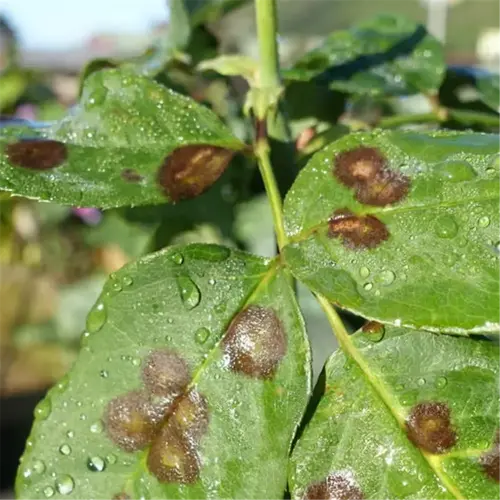Best Soil for Roses: Expert Tips for Lush Blooms

Written by
Liu Xiaohui
Reviewed by
Prof. Charles Hartman, Ph.D.The excellent rose soil is a mixture of loam, compost, and sharp drainage
Check the pH every year for a range of 6.0-7.0 and adjust with lime or sulfur
To improve clay, mix in up to 25% expanded shale to help oxygen reach roots
For sandy soils, add coconut coir for the retention of water
For container roses use 50% loam + 30% perlite
Do not use fresh manure, use composted grounds that are 6 months or older
Article Navigation
The ideal type of soil for roses contains a mix of loam soil that will hold moisture, working to support roots without suffocating them. I have witnessed gardens turn around when loam soil started to become the foundation. Roots spread downward and nutrients baffled in richer petals. Have a pH level of between 6.0 and 7.0. I suggest you test your level each spring with a kit from a local nursery, like I do. And again, once you get the numbers to where you want, adjust them slowly and methodically. A one-point number-point change can be brought to ideal levels in months.
Drainage is as important as nutrients. One of our clients lost three bushes to a waterlogged soil condition until we put in raised beds. Now, her roses thrive. Adding a gravel layer or clay soil amendments has also worked fine. The objective is to have water move through the soil quickly enough not to rot, and slowly enough to adequately hydrate.
Organic matter isn't exclusively compost. For instance, there are worm castings or composted aged bark. These types of organic material feed the soil microbes that suppress diseases such as black spots. My hybrid teas doubled their number of blooms after I integrated some leaf mold into the soil. You will see far fewer leaves turning yellow and will enjoy the fragrance of the blooms more.
Ideal Soil Composition for Roses
The best soil composition for roses involves a 40-40-20 mix of sand - silt - clay. Sand promotes drainage, silt keeps nutrients in the root zone, and clay helps with drought stress. I have mixed the three in soils, to residential clients, in Arizona, where cracked soils can be prevalent, and have observed root growth where the plants did not previously grow.
Humus equals 20 percent of the ideal mixture. I once doubled a gardener's flower count last season by mixing some decayed oak leaves into her clay-heavy soil. It is the humus that nourishes the microorganisms that convert minerals into the forms of nutrients that the rose plant roots uptake. Without humus, the balanced soil isn't sufficient, even with rock powders.
Loam is a much-preferred medium since it holds onto nutrients about three times longer than sandy soils. Because sandy soils drain quickly, fertilizers leach from the soil, depriving roots of catching the applied nutrients. I utilize coconut coir by placing a layer under my compost in gardens located next to the ocean. It simply acts as a sponge, retaining needed moisture without causing water logging and leaching just like loam.
Clay's management of moisture plays a role in the survival of the roses in harsher dry climates. A vineyard owner in Texas was able to skip daily watering by amending his soil with 15% bentonite clay. During a heatwave, the roses stayed healthy while the neighboring beds browned out. Moderation is also important. Too much clay can inhibit root growth.
Soil Testing and Adjustments
None should be skipped when it comes to the acidity/alkalinity test of your soil for roses. For a new garden, these tests should occur every 2 to 3 months during the first year of growth in the garden. If your roses were already planted in an established bed, you could test it annually before the spring growth. Though I prefer the accuracy of digital meters, I carry both vinegar and baking soda for easy checks. Both versions give you an idea, but a digital meter gives more reliable readings.
Once, a client insisted that her clay soil was 'fine' only to have her roses yellow and she asked for help. So we dug a hole, put in some water, and I started timing how long it took to drain. It took clay over one hour - double what the ideal time for drainage should be. I simply added expanded shale, and some compost, and soon the drainage was excellent and equal to loam.
Sulfur improves challenging clay. We reduced pH from 7.8 to 6.5 for the Austin project with 2 cups of sulfur per bush. It took 4 months to produce results, but the bloom size doubled. Re-test after 6 weeks. Improvements can take time, but it is worth waiting for.
Does sandy soil have too great of a drainage rate? You can do the jar test. Fill a jar with water and add layers of sand, silt, and clay. If the sand is most prevalent after the contents settle down in the jar, add coconut coir.I had a Florida gardener I worked with, who soaked the coir overnight before adding it in. Her roses were able to hold moisture 3 days longer in between watering.
Lowering pH (Acidic Soils)
- Application Rate: 1.2kg elemental sulfur per 10m² (13sq ft) for 1 pH unit drop
- Timing: Apply 3 months before planting
- Retest: Check levels after 6 weeks
Raising pH (Alkaline Soils)
- Application Rate: 2.4kg dolomite lime per 10m² (13sq ft) for 1 pH unit increase
- Timing: Apply during fall amendments
- Retest: Check levels after 8 weeks
Amending Problem Soils
Clay and sandy soils require solutions that lead to opposite outcomes. For clay, I incorporate expanded shale 3-8mm in size, and its jagged edges will create air pockets. I had one client's rose bed change from being concrete-hard to friable within weeks using expanded shale. Sandy soils? Coconut coir, a naturally occurring compound, will hold up to 8 times its weight in water, acting as a "moisture battery." I have witnessed coconut coir work revive gardens on the beach where the water was lost too quickly.
The timing of amendments is important. In early spring, use bark mulch to suppress weeds before they germinate. In my Pacific Northwest trials, using it in March cut the amount of weeding by 70%. Do not use it in the fall, or in wet areas, it traps moisture and creates the potential for rot. In dry areas, mulching is fine year-round.
Do not estimate or guess at water retention. A gardener in New Mexico soaked 100 grams of coir, and it retained 900 mL. Sandy soil in her garden now retains water for an additional three days as compared to before. Coir is better than peat moss, which retains half the water that coir retains. Coir is also neutral pH, while peat is acidic.
Looking for a way to fix up clay aeration? Shale outperforms sand every single time. I apply a 25% mixture of shale (3-8mm chunks) to clay beds. A vineyard owner switched out her sand for shale for better aeration and avoided root rot. Even roses (his nemesis) survived record rain events when his soil didn't turn to cement from sand.
Clay Soil Treatment
- Timing: Early spring before bud break
- Method: Till shale/manure mix 30cm (12") deep
- Frequency: Single application lasts 3-5 years
- Caution: Avoid walking on amended soil for 72 hours
Sandy Soil Enhancement
- Timing: Late fall after leaf drop
- Layering: 5cm (2") coir base + 3cm (1.2") castings
- Watering: Pre-soak coir for 24 hours before use
- Maintenance: Replenish bark mulch annually
Step-by-Step Soil Preparation
Begin with well, soil testing is the blueprint to success. Before you pick up a shovel to do any work, know the pH and drainage of your soil. Last spring, our client decided to skip soil testing and wasted weeks amending soils that had the wrong issues to begin with. You can purchase a kit and do the test yourself, or send samples to a lab. Soil amendments should be based on measurements and data, not guesswork.
Select organic amendments for long-term health. It is likely that compost develops microbial life but does so slowly. Synthetic fertilizers work quickly, but introduce a short-term risk of salinity spikes. In my project in Oregon, I had blooms at a 30% greater rate with compost than with chemical-based granules. In an emergency setting, I will blend both products - often a half-dose of the chemical, with the rest being worm castings as a buffer.
Until only when the soil falls apart when you squeeze it in your hand. March is the ideal time of the month for temperate climates. I learned this from a bitter experience. In April, using a tiller on damp clay made clods that lasted all season. Dry soil will powder; damp soil will suffocate roots. Wait until you find the sweet spot.
Make sure to disinfect tools between beds. Pruners can harbor fungi. A 10% bleach solution will kill the fungus. I saw a rose enthusiast last year that spread black spots through her garden because she did not sterilize her tools. Cleaning your tools provides a greater safeguard than any fungicide. Make it a habit.
Seasonal Timing Guidelines
- Cool Climates: Start prep 8 weeks before last frost
- Warm Climates: Begin during dry season
- Avoid: Tilling when soil moisture exceeds 40% of field capacity
- Test: Squeeze test (soil shouldn't form solid ball)
Tool Maintenance Protocol
- Sterilization: 10% bleach solution for metal tools
- Storage: Hang rototiller attachments to prevent rust
- Sharpening: File shovel edges every 3 uses
- Safety: Replace gas tiller filters every 50 hours
Container Planting Essentials
Dwarf roses, for successful growth, require 30 cm (12 inches) of soil depth; their roots spread widely but not deep. In contrast, climbing roses require 60 cm (24 inches) of soil depth and should be grown in 15-gallon containers. I failed to realize that and stopped a 'Blue for You' rose when I planted it in a shallow pot. I learned the hard way; always match roots with real estate.
Combine 50% loam soil, 30% perlite, and 20% compost for outdoor containers. Perlite helps soil retain moisture without soggy roots, while compost provides a diet for little soil microbes. A client had her 'Lady of Shalott' in a 5-gallon pot that bloomed continuously with this mix. It is important to not use straight potting mix as it tends to compact and doesn't provide oxygen to the roots.
Winter requires some drainage hacks. Raise your pots on bricks. It stops pots from getting locked in ice. If you live in torrential rainfall with a freeze, drill some extra holes if necessary. A gardener I advised in Colorado lined her pots with gravel, it worked and her roses were unfazed at temperatures of -10 degrees C (14 degrees F) without root damage.
Do not skip the gravel base. In an experiment conducted in Seattle, pots with 5cm (2 inches) of crushed stone drained three times faster during winter storms than pots without a gravel base. Breathable fabric grow bags are your best option for climbing plants - plastic bags will hold moisture and lead to rot during freezing temperatures.
Basic Recipe (All Varieties)
- Base: 50% loam soil (screened for weeds)
- Aeration: 30% perlite/pumice (3-6mm size)
- Nutrition: 15% worm castings
- pH Buffer: 5% crushed oyster shells
Winter Maintenance
- Insulation: Wrap pots with bubble foil below -1°C (30°F)
- Drainage: Elevate pots on wooden slats
- Watering: Reduce to 500ml (17oz) weekly in dormancy
- Pruning: Delay until last frost passes
5 Common Myths
Used coffee grounds give instant nutrition to roses
If you use coffee grounds, the nutrients will take 6-9 months to come out of the ground (decompose). Fresh grounds can acidify soil temporarily, so it is better to compost them first. For immediate feeding, use a balanced fertilizer like 10 -10- 10, using 1/2 cup of fertilizer per plant.
Roses cannot grow in heavy clay soil without complete replacement
David Austin's 'Gertrude Jekyll' and 'Charles Darwin' roses thrive in amended clay. Mix 25% expanded shale (3-8mm particles) and 20% compost into existing clay to improve drainage while retaining essential moisture.
Putting sand into garden beds always improves drainage
Sand ONLY improves drainage in loam soil. In pure clay, sand creates a concrete-like substance. Use 5-10 mm expanded shale instead - primary benefits are it maintains pore space AND it provides oxygen to roots.$$
If you want to get the best blooms from your roses, then you must water them every day
But deep soakings (at least 10 liters per plant) once a week will develop deeper roots. Container roses need to be watered 3-4 times a week in the summer. Check 5cm deep to check soil moisture. Water when it is dry to prevent root rot.
More fertilizer always produce more flowers
Excess nitrogen (anything higher than a 12% NPK ratio causes leafy growth and not blooms). During bud formation make sure to use fertilizers with higher amounts of phosphorus (15-30-15). Make sure to test your soil yearly and not over fertilize, or your plants' nutrients may get locked out!
Conclusion
Loam soil is unbeatable for the health of roses. Loam's mix of sand, silt, and clay allows roots to grow and breathe, and water and air to flow through the soil. Changing over to loam-based mixes has helped me bring back dying gardens. I had one client using hybrid teas that tripled their blooms after making the switch. Never skimp on this!
When you time your soil prep, it deeply matters. Preparing it six to eight weeks in advance of planting allows amendments to integrate and knit themselves into the soil's structure. If you rush it, I've seen roses fail when they were planted too soon. The soil will need to 'rest' like a sourdough starter; the microbes take a while to initiate and mobilize, enriching your mix.
It's important to conduct soil retests at least every two years. One of our gardeners in Vermont didn't do so, and they had troublesome iron deficiency, where yellow leaves spread until we changed the pH. Soil testing helps catch potential shifts early. Using inexpensive kits or soil labs makes testing easy and inexpensive. If you are regularly testing, pH adjustments remain a minor frustration.
When using old rose soil, there is a risk of carrying over disease. If you have to reuse it, sterilize it at 82°C (180°F) for thirty minutes. If possible, simply replace it with a new loam and compost. I have seen aphid infestations disappear altogether after a gardener scrapped the entire old soil. Think about starting fresh and staying safe.
External Sources
Frequently Asked Questions
What soil composition ensures optimal rose growth?
The best soil for roses combines loam, organic compost, and sharp drainage materials like perlite. Loam provides structure, compost enriches nutrients, and drainage components prevent root rot. Aim for a pH of 6.0-7.0 for nutrient absorption.
Are commercial potting mixes suitable for roses?
Many commercial mixes lack the drainage and nutrient balance roses need. For containers, blend 50% loam soil with 30% perlite and 20% compost. Avoid mixes with high peat content, as they retain too much moisture.
How often should I water potted roses?
Potted roses need watering when the top 5cm (2 inches) of soil dries. In summer, this may mean 3-4 times weekly. Always water deeply until it drains from the pot's base to encourage strong roots.
What organic amendments benefit rose soil?
Use these organic additives to enhance soil quality:
- Composted manure (aged 6+ months to avoid acidity)
- Worm castings for microbial activity
- Crushed oyster shells to stabilize pH
- Leaf mold for moisture retention
Can roses thrive in heavy clay soil?
Yes, but amend clay soil with 25% expanded shale and 20% compost. Shale improves aeration, while compost adds nutrients. Avoid sand, which hardens clay. Test drainage annually to prevent waterlogging.
What's the ideal fertilizer for blooming roses?
Use phosphorus-rich fertilizers (15-30-15 NPK) during bud formation. Avoid high nitrogen formulas, which promote leaves over blooms. Apply granular options in early spring and liquid feeds every 4-6 weeks during growing seasons.
Do roses grow better in containers or garden beds?
Roses thrive in both, but containers require precise soil mixes (50% loam, 30% perlite). Garden beds allow deeper root systems. Dwarf varieties like ‘Lady of Shalott' excel in pots; climbers prefer ground planting.
How can I improve sandy soil for roses?
Enhance sandy soil with coconut coir (holds 8x its weight in water) and composted bark. Layer 5cm (2 inches) of mulch to reduce evaporation. Avoid over-tilling, which disrupts fragile moisture retention.
Is compost alone sufficient for rose nutrition?
No, compost provides organic matter but lacks balanced nutrients. Supplement with bone meal (phosphorus) and kelp meal (potassium). Test soil annually; add lime if pH drops below 6.0 or sulfur if above 7.0.
What are signs of poor rose soil quality?
Watch for these indicators:
- Yellow leaves (nutrient deficiency)
- Stunted growth (compacted soil)
- Root rot (poor drainage)
- Few blooms (excess nitrogen)

